#St Vigeans
Explore tagged Tumblr posts
Text
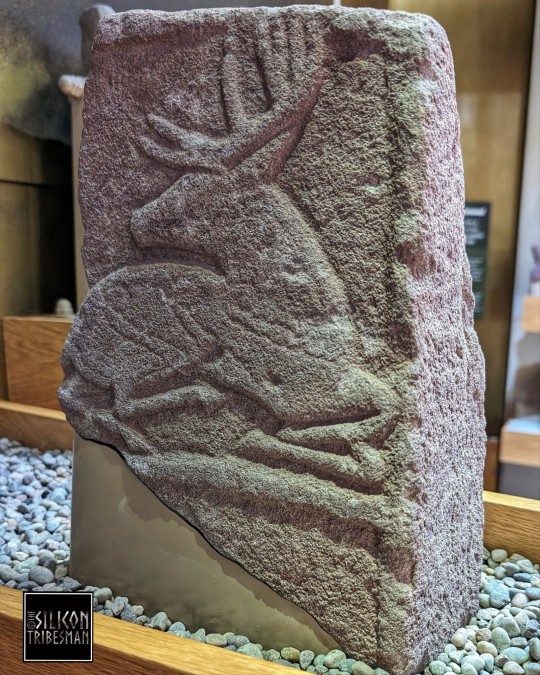
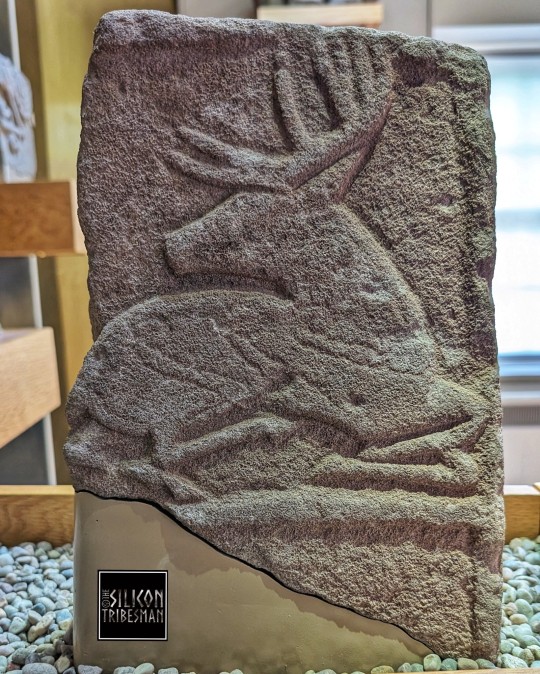
Pictish Stag Symbol Stone, circa 9th Century CE, St. Vigeans Stones and Museum, Arbroath, Scotland
Considered by many to be one of the finest Pictish animal depictions.
#pict#Pictish#pictish art#pictish beast#pictish stones#ancient cultures#ancient living#ancient craft#archaeology#relic#fragment#stag#deer#nature#stonework#st vigeans#Scotland
1K notes
·
View notes
Text









A long while since I got to St Vigeans, but here are a couple of snaps of the stanes in the excellent wee museio including saints breaking moon-like breid, assorted craiturs and profiles in hoodies, and a triquetra amid the z-rods and ither symbols.
1 note
·
View note
Photo










Last bunch from St Vigeans. First up we’ve got St Vigeans 7, which has been hacked up something fierce but what remains has an impressive density of symbolism to think about. To the lower-right of the cross we’ve got a couple of monks on their way somewhere, below a guy hanging upside down for some reason, while on the other side are two more monks peacefully breaking bread together above a carving of an emaciated man sacrificing a bull, perhaps meant to symbolise the Eucharist of Christianity being far more nourishing than any pagan ritual. Which is a worldview that I have Problems with but the carvings are striking nonetheless. What’s also interesting here is that the guys with the bread bear a striking resemblance to a painting found in a monastery in Egypt, of all places; maybe somebody went there on a pilgrimage and brought a copy back for their brothers in Scotland to see.
I don’t have the academic designations for the rest of these stones to hand, but also:
A horse, a little guy who seems very happy with his cosy hood, and a fragment showing someone holding a book (probably a bible)
A large piece of a cross-slab much weathered from being repurposed as a step. On one side of the cross, the carvings are almost completely gone, though you can still see what could be either a mirror or half of a double-disc; on the other side, which would presumably have been protected by the step above, is a little eagle and a serpent-and-Z-rod, though the angles of the Z-rod also make it look like the sculptor may have been thinking of a Rod of Asclepius as well.
Two double-discs-and-Z-rods, in differing states of completion.
Bloke on a horse.
Two sides of a cross-slab fragment. One side shows a little gryphon that would have stood in the upper quarter around the cross; the other has a rather charming stag that’s just been startled by something. Possibly the missing chunk to the side would have shown whatever startled it, maybe an approaching hound or something.
And finally, a person being attacked by beasts and an odd upside-down skeletal figure. They’re usually assumed to be demons of some kind.
OK I’m done, go home.
2 notes
·
View notes
Text
𝐌𝐈𝐍𝐈𝐒𝐓𝐑𝐘 𝐎𝐅 𝐌𝐀𝐆𝐈𝐂 𝐌𝐀𝐆𝐈𝐂𝐀𝐋 𝐏𝐄𝐑𝐒𝐎𝐍𝐒 𝐑𝐄𝐆𝐈𝐒𝐓𝐑𝐀𝐓𝐈𝐎𝐍 𝐅𝐈𝐋𝐄.

FULL NAME : WOOD, thaxter finlay KNOWN SOBRIQUETS AND/OR PSEUDONYMS : thax, thaxy REGISTERED BLOOD STATUS : HALFBLOOD KNOWN LANGUAGES : ENGLISH, scottish gaelic BIRTHPLACE : ST. VIGEANS, angus, scottland GENDER, PRONOUNS : TRANS MAN, he / him FAMILY : WOOD , finlay ( father ) ; ADDAIR , elsbeth ( mother ) ; ADDIAR , william ( step father ) ; ADDAIR , connor ( half brother ) ; WOOD , oliver ( paternal uncle ) ; WOOD , vanille ( paternal aunt ) ; MACGOWAN , douglas ( maternal grandfather ) ; MACGOWAN , margaret ( maternal grandmother ) MARITAL STATUS : – – SPOUSE , IF APPLICABLE : – – OFFSPRING , IF APPLICABLE : – – ORIENTATION : heterosexual , heteroromantic DATE OF BIRTH & AGE : march 31st , 1929 ; twenty one WESTERN ZODIAC : ARIES SUN , sagittarius moon , gemini rising PROFILE : EYE COLOR : hazel HAIR COLOR : brown BUILD & HEIGHT : muscular ; 5′9 IDENTIFYING MARKS & SCARS : a variety of marks from various quidditch and flying accidents, along with his antics at hogwarts, but none that would stand out particularly well without close observance SCHOOLING : HOGWARTS , school of witchcraft and wizardry HOUSE , IF APPLICABLE : RAVENCLAW N . E . W . T . S : astronomy ( o ) , history of magic ( e ) , arithmancy ( o ) , study of ancient runes ( a ) , alchemy ( e ) OCCUPATION : PROFESSIONAL QUIDDITCH PLAYER , chaser for the montrose magpies MINISTRY FIELD , IF APPLICABLE : – – REGISTERED WAND : chestnut wood , dragon heartstring core , pliant , 12 ¼ inches AMORTENTIA : rosemary , freshly ironed clothes , worn leather BOGGART : recently changed from it’s previous form ( dealing with thax’s fear of being unknown ) , and is now a small child, connor addair, who looks afraid, while dark hands reach out and grab at the edges of his clothing, a threat that they will tear the child apart if a riddikulus charm is not conjured quickly enough PATRONUS : a FERRET KNOWN AFFILIATIONS : the montrose magpies quidditch team , henry picquery CURRENT MAILING ADDRESS : &33L42 WAART AVE, penthouse LAST SEEN LOCATION : at his family home in st. vigeans ADDITIONAL INFORMATION : – – SECURITY STATUS : VULNERABLE , protection provided to family
2 notes
·
View notes
Text
Aberlemno Pictish Stones
Battles, crosses and combs. The first question I always want to ask about Pictish stones is “why?”, closely followed by “who?”. What is the purpose of the carvings? Were they done purely for art’s sake, to commemorate events for future generations, to boost a chieftain’s standing in the world, or for some other reason I haven’t yet fathomed? It’s nice to know I’m not the only one who doesn’t…
View On WordPress
#Aberlemno#Arbroath#good places to visit in Scotland#Pictish stones#Scottish tourist attractions#St Vigeans#touring Scotland#visiting Scotland
0 notes
Photo








This weekend I visited the Sculptured Stones of St. Vigeans. It is amazing to see the great range of culture available in Angus! The stones are an excellent combinations of Scottish history and geology. (Part 2) - https://www.historicenvironment.scot/visit-a-place/places/st-vigeans-stones-and-museum
8 notes
·
View notes
Text
The Celtic Picts of Scotland
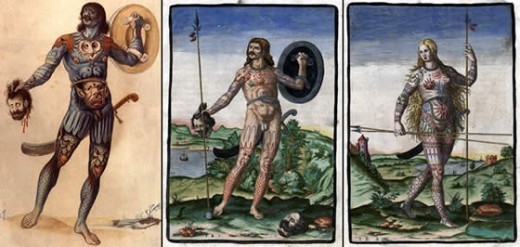

Three drawings of Celtic Pict men and women with tattoos covering their bodies. Pict was the Roman term for 'painted ones.' | Source

Illustration of Pict woman with tattoos. | Source
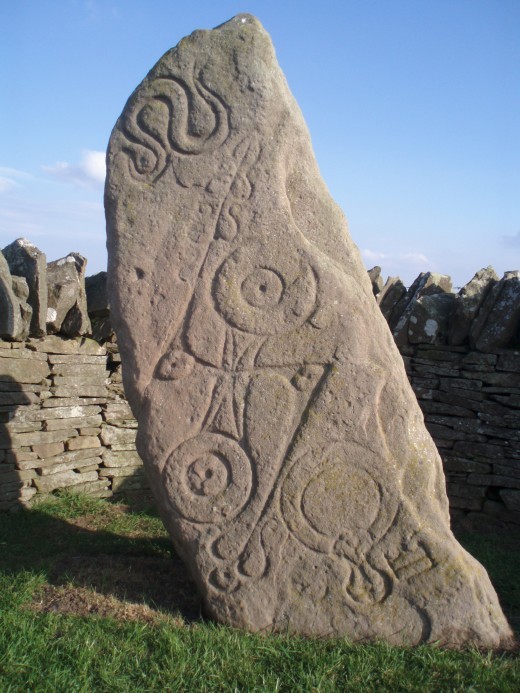
Serpent Stone with Pict drawings and engravings. | Source
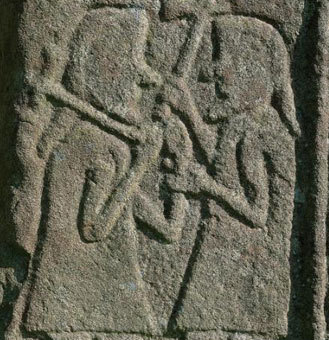
St. Vigeans Stone - carvings by the Picts. | Source
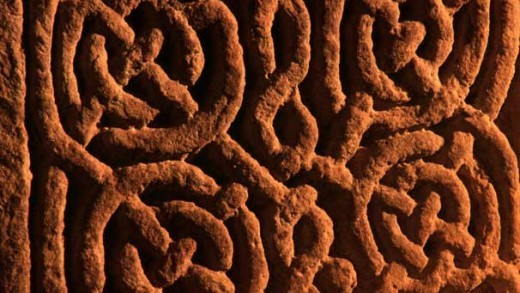
Pictish stone. | Source
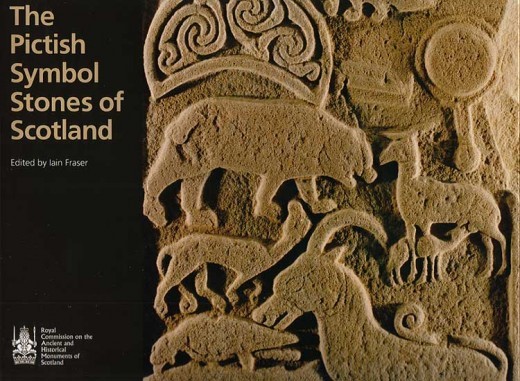
Pictish Symbol Stones of Scotland. | Source
The Celtic Picts
One of the most interesting of the Celtic tribes in the British Isles are the Celtic Picts. They inhabited what is modern day Scotland, north of the Rivers Forth and Clyde. What is unusual about this mysterious, enigmatic, and unusual Celtic tribe are the tattoos that covered their entire bodies and the war paint they wore in battle to frighten their enemies. They were a dominate force in what is now Scotland for at least 600 years and their neighbors were the Gaels, Britons, Angles and Vikings. They were called Picts by the Romans because they were "painted people" and even today we don't know what they called themselves. During the late Iron Age and early Medieval periods, the Picts were a tribal confederation of Celtic peoples living in ancient eastern and northern Scotland. They were a mysterious 'painted people' that just suddenly disappeared from Scotland and history during the Dark Ages. They were fierce Celtic warriors that stopped the invasions of the Romans and the Angles in their lands north of the Rivers Forth and Clyde. Because they left no written records or histories behind, all we know of their inhabiting what is modern day Scotland from the Pictish stones throughout Scotland and the Brythonic place name elements in Scotland. The first that the Picts appear in writing are from the chronicles of the Romans who had invaded Briton in 43 AD and stayed until the tenth century. It is believed the Picts over several decades had merged with the Gaels. They spoke the now extinct Pictish language that was thought to be related to the Brythonic languages spoke by the Britons who lived south of them in England. The Picts are believed to be descendents of the Celtic Caledonii tribe and other Celtic tribes mentioned by the Roman historians or on the world map of Ptolemy. Pictland, also called Pictavia, gradually merged with the Gaelic kingdom of Dal Riata to form the Kingdom of Alba, which eventually came to be called Scotland. Alba expanded absorbing the Brythonic kingdom of Strathclyde and Berciacian Lothian and by the 11th century historians believe the Pictish people and their identity had been subsumed into the "Scots" conglomeration of people. The Pictish society was typical of those Celtic tribes during the Iron Age in Northern Europe. They traded with neighboring Celtic tribes. Very little of Pictish writing has survived so what we know today of their culture comes from archaeological diggings and finds. We know about Pictish history from Bede's Historia ecclesiastica gentic Anglorum written approximately in the late 6th century and also from various Irish annals. We don't actually know what the Picts called themselves because Pict is what the Romans called this Celtic people. The Latin word Picti appears first in a panegyric written by Eumenius around 297 AD. The word means "painted or tattooed people. Picti seems to be a generic term for people living north of the Forth-Clyde isthmus. Old English called these people Pechts and the Welsh called them Fichti in ancient writings from Ireland. The name Cruthin, Cruthini, Cruthni, Cruithni, or Cruithini (the modern Irish Cruithne) was given to the Picts and to another group of people who lived alongside the Ulaid in eastern Ulster. Historians believe that a Pictish federation of Celtic tribes was formed partly as a response to the growth and northern movement of the Roman Empire. How and why this happened is not known today. Speculation is that they banded together to stop the Roman Empire from seeking their lands north of Hadrian's Wall. We have only heard these names from second or third hand from speakers of the Brythonic or Gaelish language as Pictish written recorded history did not begin until the Dark Ages. When the Angles of Bernicia over ran British kingdoms, one of which was the Anglian kingdom of Deira, they later became the most powerful kingdom in Britain. Deira and Bernicia together were called Northumbria. It is believed the Picts were probably a tributary to Northumbria until the reign of Brideimac Beli in 685 AD. The Anglicans suffered a severe defeat at the Battle of Dun Nectain that stopped the Angles northward expansion. The Picts sent the Angles back south to Britain. By the mid 9th century Vikings had destroyed the kingdoms of Dal Riata and Northumbria and greatly diminished the power of the Kingdoms of Strathclyde and founded the Kingdom of York. During a major battle of 839 AD, the Vikings killed King of Fortriu, Eogan man Oengusa. In 840's AD Cinaed mac Alpin (Kenneth MacAlpin) became king of the Pict. He united the Picts and the Scots and together these tribes formed the new Kingdom of Scotland. At this time they routed out the Vikings. During the Dark Ages, the Pictish language did not suddenly disappear but through a process of Gaelicisation ( which may have begun generations earlier) was clearly underway during the reign of Kenneth MacAlpin. By the 11th century, the inhabitants of Alba had become fully Gaelicised Scots and the Pict identity was forgotten. Later in British Isles history, the idea of Picts as a Celtic tribe was revived in myth and legend.
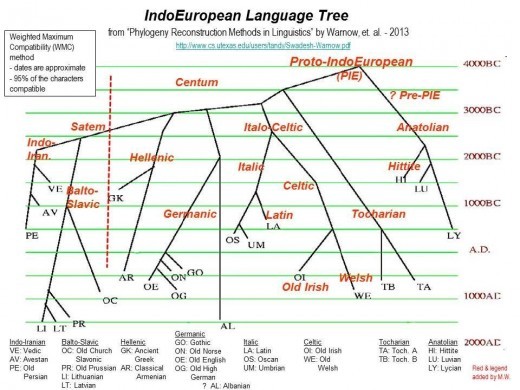
Indo-European Language Tree from which the Pictish Celtic languages are branches. | Source
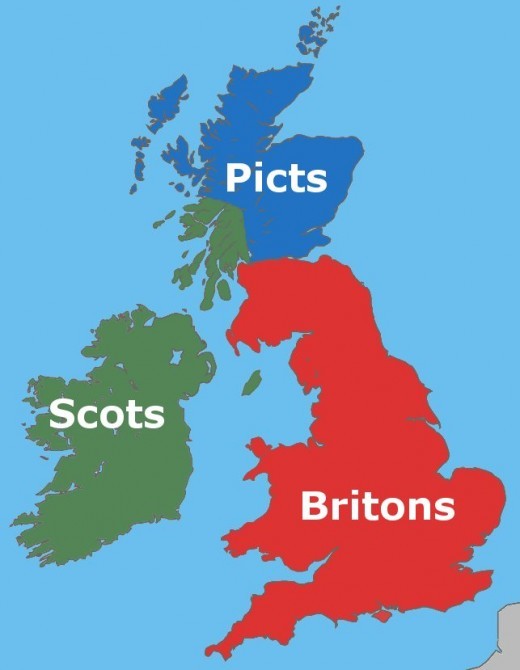
Where Britons, Scots and Picts lived 4,000 to 3,000 years ago. | Source
Pict song
Pict Language
Although the Picts were Celtic tribes and loosely connected by language, the Pictish language has not survived. Evidence of a Pict language is limited to place names, the names of people found on monuments and the contemporary records. What this evidence tells us today is that the Picts spoke Insular Celtic languages. The Pict languages are related to the southern Brythonic languages. Place names prove the existence of historic Pictish settlements in Scotland. The Brythonic prefixes, Aber- Llan- Pit- in modern place names indicate regions inhabitated by Picts from the past: Aberdeen Lhanbryde Pitmedden Place names also show the emergence of the Gaelic languages into Pictland. During the 8th century, Atohll, means New Ireland and is an indication of the Gaelic influences in the Pict languages. Medieval Welsh traditions credited the founding of Gwynedd to the Picts. Wales has traced their principal royal families, the Houses of Aberffraw and Dinefur to Cunedda Wiedig to the Pict language and the Picts are said to have invaded N. Wales from Lothian. There are several theories of the Pict Language: Insular Celtic language allied with P-Celtic (Brythonic) language (Welsh, Cornish Cumbria, Breton, Brittonic) Insular Celtic language allied to the Q-Celtic (Goidelic) language. (Irish Gaelic, Scottish Gaelic and Manx) Germanic language allied with Old English, the predecessor to the Scots language. Pre-Indo-European language a relic of the Bronze Age. Most historians and linguists today attribute numbers one and two to the Pict language and agree Pictish was a branch of the Brythonic language. They do not believe today that numbers three and four attributed to the Pict language. During the 5th century, Pictish came under increasing pressure and influence from the Gaelic language of Dal Riata until its eventual replacement. Pictish influenced the development of Modern Scottish Gaelic by influencing the syntax of Scottish Gaelic and, therefore, bears greater similarity to the Brythonic language than does Irish Gaelic. Evidence of place names and personal names demonstrates that Insular Celtic languages related to a more southern Brythonic language that was formally spoken in the Pictish area. Throughout history, historians and linguists have looked into the Pictish language. In 1582, George Buchanan aligned the Pictish language with Gaulish, a P-Celtic language, and George Chalmers in the early 19th century considered Pictish and Brittonic one and the same. P-Celtic orthography in the Pictish king lists and place names were predominant in historically Pictish areas. And Celtic scholar Whitley Stokes published a philological study in Irish annals and stated that Pictish was closely related to Welsh. Toponymist William Watson also did research of Scottish place names and concluded that the Pictish language was a northern extension of British and that Gaelic was later introduced from Ireland. Today, Scottish Gaelic, unlike Irish, maintains a substantial closeness to Brythonic loan words and uses a verbal system modeled on the same pattern as Welsh. (Forsyth 1995a)
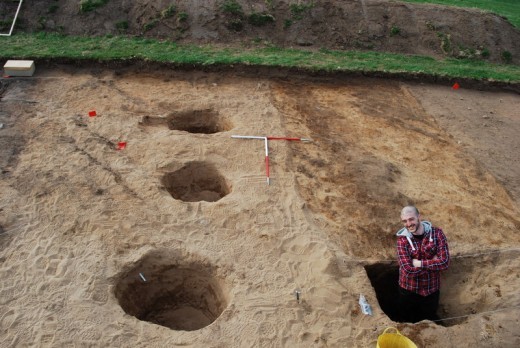
Archaeological dig in the village of Rhynie, Scotland showing Pict drawings. | Source
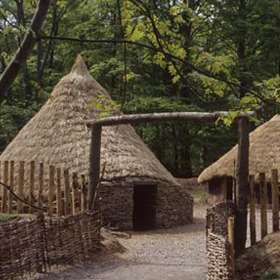
Reconstruction of round houses of the Picts in Scotland. | Source
Modern Pict Archaeological Find
Recently archaeologist, Dr. Gordon Noble (University of Aberdeen) and Dr. Meggen Gondek (University of Chester) who are both co-leaders of Rhynie Environs Archaeological Project (REAP), lead an archaeological dig of a medieval settlement and unearthed significant Pict artifacts. They consider this Pict find to have been a Pict seat of power in the tiny Scottish village of Rhynie. They unearthed significant Pict artifacts and a collection of eight Pictish symbols. They date their find of Pict life to have been from approximately 400-900 AD The symbol stones provide a record of their identity, beliefs, and lifestyle, although the carvings have not yet been translated. This is one of the first large scale digs at this kind of site. "This is one of the most significant finds of early medieval imported goods in the north of Brittany," according to Dr. Gondek, and it shows "an important force in power politics of early medieval Scotland." The remains are of what would have been an elaborate system of defensive enclosures including two deep ditches and a massive timber palisade and remains of further wooden structures including evidence of buildings. This archaeological finding is important because very little is known about the power structures and centers of the Picts. Noble and Gondek believe this find provides an exciting opportunity to find out more about how power was consolidated when the first kingdom of Scotland was emerging. According to Dr. Noblel, the findings of this dig will affect how we understand the trade networks and political relationships during this period. The imported pottery found at the dig is highly significant according him, and suggests Rhynie had political trading links with the kingdoms of the west. Dr. Noble said, "with this excavation we are getting the real physical evidence of who they were as a people - we just have to keep digging to find out more."
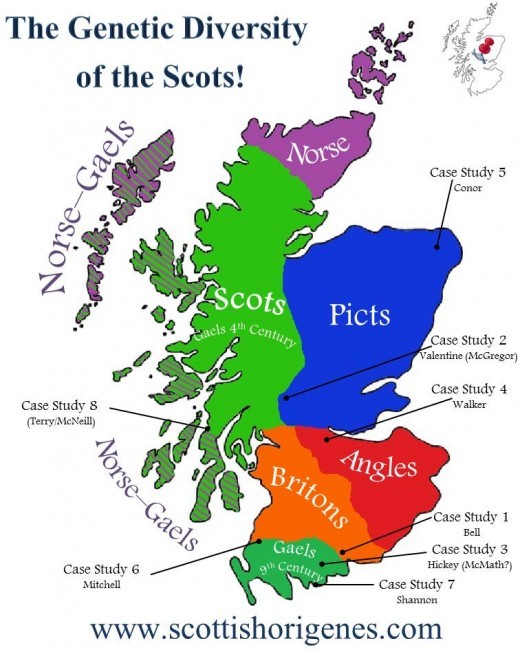
Scottish medieval ethnicity map when Kenneth MacAlpin united the Picts and Scots. | Source
Genealogical Pict marker found
Recently, Dr. Jim Wilson, chief scientist and senior lecturer in population and disease genetic at the University of Edinburgh, discovered a DNA marker that suggests that 10% of Scottish men are directly descended from the Celtic Pict tribe. That means, one out of ten Scottish men are descended from the Picts. With this new information the mystery of the mysterious disappearance of the Celtic Pict tribes from the Late Iron Age, who battled the Romans, has been solved. Today, through research from the ScotlandDNA, and ancestry testing company also led by Dr. Jim Wilson, has determined from finding a marker that a large number of descendents of these northern tribes, know as the "Picti", by the Romans meaning "painted ones," are living in Scotland today. Dr. Wilson, found a Y chromosone marker arising among the direct ancestors of the Picts, and concluded this is the "first evidence that the heirs of the Picts are presently living among us." He tested the father line marker and found, R1b-S530 in more than 3,000 British and Irish men. It is ten times more common in those with Scottish grandfathers than those with English grandfathers. Out of those tested, a total of 170 men presently living in Scotland have been found to carry this Pict marker although Dr. Wilson believes the number to be far higher. Ten percent of more than 1,000 Scottish men tested carry the R1b-S530 marker and only 0.08% of English men have it Wilson further found that only 3% of the men in Northern Ireland carry the Pict lineage, but it is only seen once in more than two hundred men from the Republic of Ireland. It is believed the presence of this marker in Northern Ireland is because of the plantations of Lowland Scots in the 16th and 17th centuries. What was surprising to Wilson was the really huge difference between Scotland and England. According to Wilson, "It is a clear sign that while people do move around there remains a core who have remained at home." He continued, ". . ., if we can see that about 10% of the father lines look to have Pictish origin, then we can make the prediction that probably a lot of other lines do." Wilson also agrees with what historians have found over the years about ancient Pictland. It has been defined by historians as the area where Pictish symbols stones and Pictish place names, such as those that have the prefix Pit- or Pett-. This heartland lies in Scotland north of the River Forth and Pictish names are seen specifically in Fife, Perthshire, Tayside, the northeast, and around the Moray Firth coastlines. Within Scotland there is a strong concentration of the R1b-S530 group in these areas. The Picts had the largest kingdom during Dark Age Scotland and fought off both of the Romans, Angles, and Vikings to preserve their independence. It has always been assumed the Picts disappeared, but with the discovery of the Pict genealogical marker, history has been re-written and it is now believed the Picts were over taken by political events becoming assimilated by incoming Scots invading from Ireland. And, with Scottish men today having the Pict marker in their DNA, it is obvious the Picts never completely disappeared. Sources: www.bbc.co.uk/scotland/history/articles/kingdom_of_the_picts/ www.abdn.ac.uk www.scotsman.com/lifestyle/heritages/one-in-ten-scotsmen-descended-from-picts-1-2855561 Read the full article
3 notes
·
View notes
Text







St. Vigeans Pictish Symbol Stones Selection 2, St. Vigeans Stones and Museum, Arbroath, Scotland
#picts#pict#pictish#pictish atones#archaeology#st vigeans#ancient cultures#ancient sites#stonework#pictish beast#Scotland#stone carving#Arbroath
131 notes
·
View notes
Photo

High Jump Equipment Suppliers in St Vigeans #Athletics #High #Jump #Specialists #St #Vigeans https://t.co/ekE9OMdNJ7
High Jump Equipment Suppliers in St Vigeans #Athletics #High #Jump #Specialists #St #Vigeans https://t.co/ekE9OMdNJ7
— Track Field Sports (@trackfieldsprts) August 30, 2020
0 notes
Photo



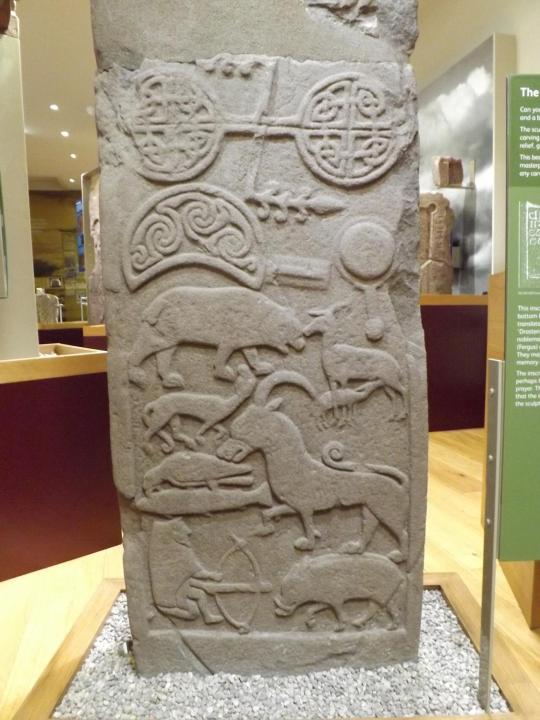

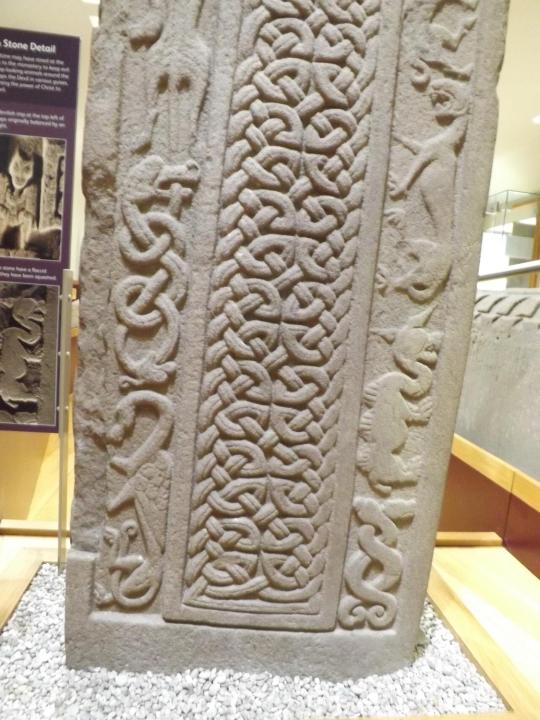
Then - after ringing to confirm it was open, as I’d received conflicting intelligence - I made for the St Vigeans (rhymes with pigeons) Sculptured Stones Museum, built into two adjoining cottages in the village of that name just north of Arbroath. This was probably also a major religious centre for the Picts, and some of the recurring themes in the carvings suggest that it might have been a monastery dedicated to Saint Anthony.
This photoset focusses on one of the most important stones in the collection, academically referred to as ‘St Vigeans 1′ but more evocatively known as the Drosten Stone. Like Meigle 4 it’s missing a big chunk, but the carvings on what remains are pretty spectacular. One side shows a bunch of different animals. Most of them are easily identifiable as creatures you can see in Scotland today, or would have been able to in the days of the Picts; you can see a wild boar, hounds pursuing a stag, a bird of prey - perhaps an osprey - eating a fish and a bear menacing a hind suckling her fawn, as well as a little guy who is most likely going to be savaged by the boar before he can loose his crossbow. But then there’s the odd creature above the boar; the goat-like horn, long tail and wolf-like muzzle make me think it could be the sculptor’s idea of the Chimaera of Greek myth.
Then on the cross-side we’ve got some more odd little critters, including a snarling panther, some dragons and serpents interlaced and otherwise, and... whatever the hell that thing below the panther is meant to be. The guide at the museum told me that it’s been interpreted as a catoblepas, a legendary creature described in various Roman sources (including Pliny) as having a long neck with a head so heavy that it dragged on the ground. But it could also be a horribly misshapen camel. Or who knows, maybe a time traveller showed the sculptor a picture of a stegosaurus!
Finally, why it’s called the Drosten Stone: very unusually among Pictish stones, it bears a small inscription in Latin text, down near the floor on the side next to the little crossbowman. It says ‘DROSTEN: IPEUORET ETTFOR CUS’. What does this mean? Various interpretations! But the usual one is that Drosten, Uoret and Forcus are people’s names.
2 notes
·
View notes
Text
Netball Facility Fencing in St Vigeans | Sports Fencing Systems...

Netball Facility Fencing in St Vigeans | Sports Fencing Systems #Netball #Facility #Fencing #St #Vigeans https://t.co/72qBPyqpE6
Netball Facility Fencing in St Vigeans | Sports Fencing Systems #Netball #Facility #Fencing #St #Vigeans https://t.co/72qBPyqpE6
— Netball Court (@netballcourt) October 22, 2019
from Netball Court Specialists https://netballcourtspecialistsuk.tumblr.com/post/188517362628 via IFTTT
0 notes
Photo







This weekend I visited the Sculptured Stones of St. Vigeans. It is amazing to see the great range of culture available in Angus! The stones are an excellent combinations of Scottish history and geology. (Part 1) - https://www.historicenvironment.scot/visit-a-place/places/st-vigeans-stones-and-museum��
6 notes
·
View notes
Photo
I grew up in Angus, Scotland which has some great examples of Pictish carving, including the St. Vigeans stone mentioned in the first image. There is now an local business just a few miles up the road from my house making and selling traditional Pictish and Celtic stone carvings. The guy is called David McGovern and he also runs stone carving courses to pass on these traditional skills. The circle of stones is a custom project he worked on for my mum, each one is carved with a different Pictish design, as found around Scotland. The eagle is one of his other pieces. These skills aren’t just a theoretical, there is a real revival going on, and if you are in a position to you can learn them for yourself or own and love a piece of art borne of them. Or just visit the website and spread the word.


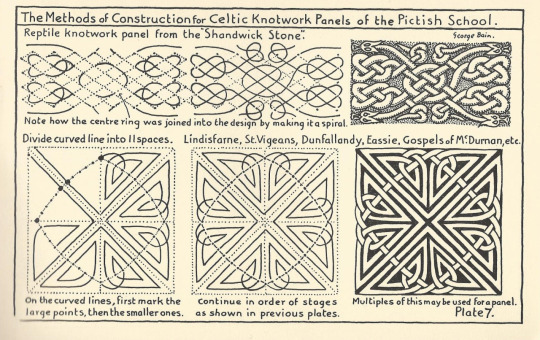
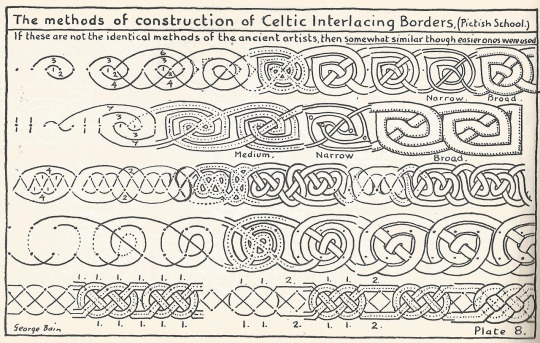

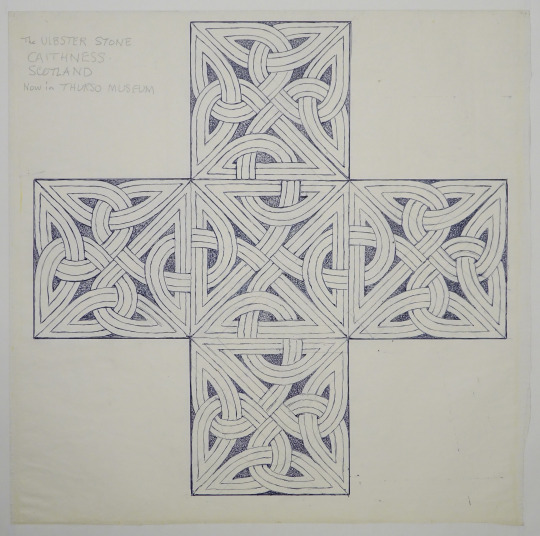


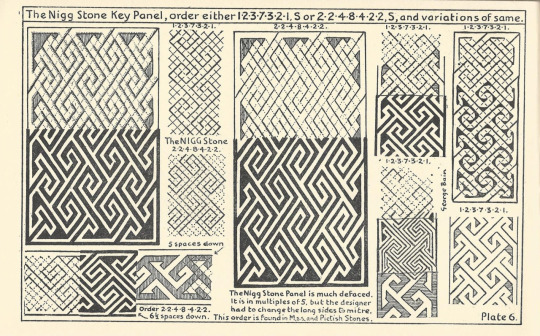
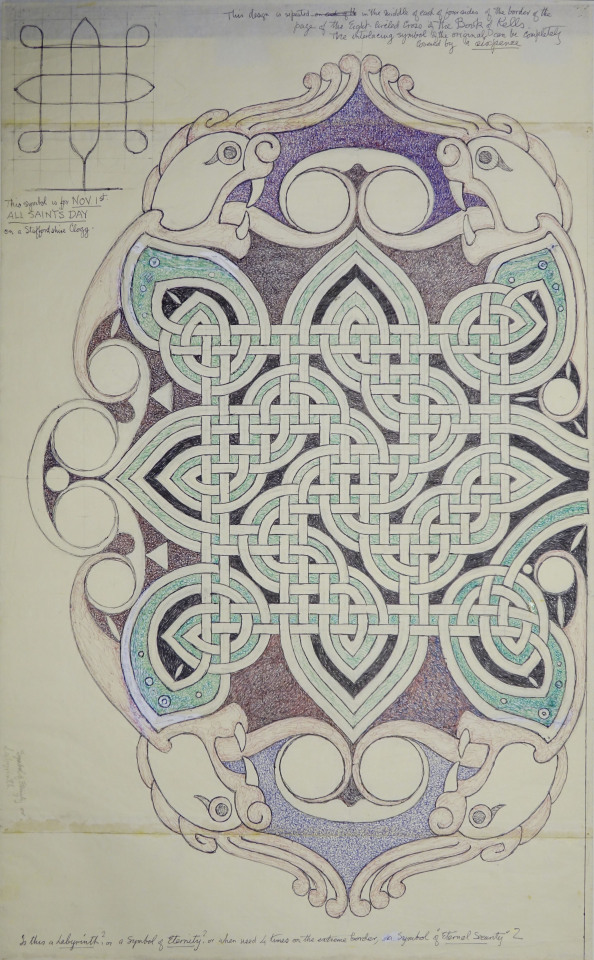
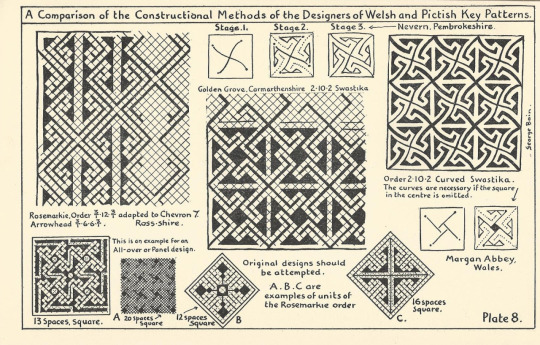
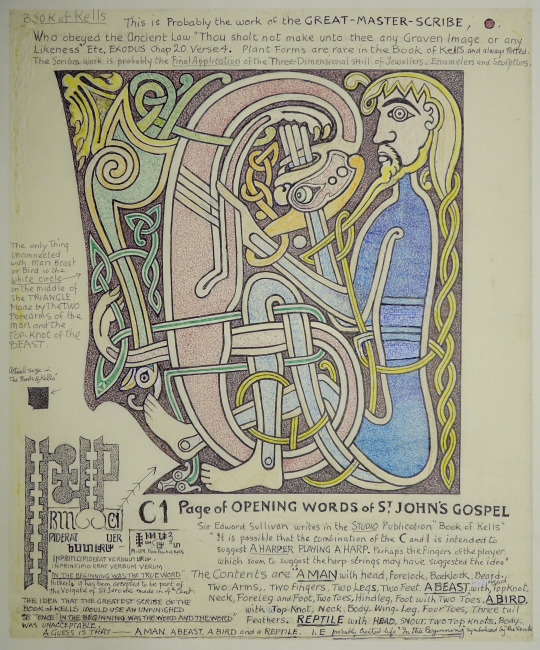
George Bain, (1881–1968), born in Scrabster in Caithness, Scotland, was an artist and art teacher who made an important and influential contribution to the revival of interest in Celtic and Insular art which began in the 19th century.
9K notes
·
View notes
Photo

School Daily Mile Markings in St Vigeans #Schools #Daily #Mile #Track #Design #St #Vigeans https://t.co/tpPpD7jM9C
School Daily Mile Markings in St Vigeans #Schools #Daily #Mile #Track #Design #St #Vigeans https://t.co/tpPpD7jM9C
— Playground Markings (@playareamarking) February 11, 2019
0 notes
